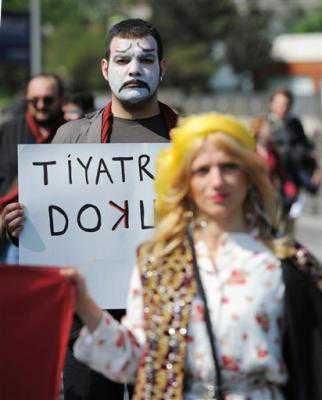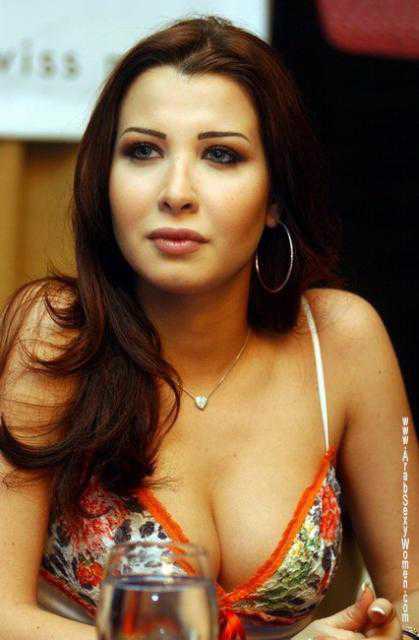It’s James Bond’s first day in Istanbul, and things aren’t going that well. In hot pursuit of one of his many foes, Bond has forced the villain Patrice (Ola Rapace) to flip his Audi A5 and skid across a crowded marketplace, but his fellow agent Eve (Naomie Harris) has also crashed their Land Rover into a market stall, leaving Bond on foot and relying only on his gun. Crouched behind a pile of bright oranges, Bond answers the gunfire from Patrice just a dozen yards away, all while the vendors and shoppers of the market look on in horror, and a frankly unbelievable number of pigeons scatter overhead to add to the chaos.
Bond and Patrice eventually continue the chase on motorbikes that zip atop the roof of Istanbul’s historic Grand Bazaar, then to the city suburbs and eventually to a train in the countryside. If this all sounds like some kind of grand finale, it’s actually just the beginning of Skyfall, the 23rd Bond film and one director Sam Mendes is calling a “regeneration” of the character. Even the decision to shoot in Istanbul, where From Russia With Love filmed 49 years ago, says a lot about the movie’s ambition– not only are they confident enough to stand right next to the classics of the franchise, but they’re bold– maybe crazy?– enough to shoot in one of the most crowded, ancient, complicated cities on Earth.
Eminonu Square, like most everywhere else in Istanbul’s Old Town peninsula, is crowded enough that a James Bond film shoot can actually blend in. The square is usually wide open to vendors selling toys and snacks and the massive flocks of pigeons, but the Skyfall team has set up their own market of stalls selling everything you see in the nearby Spice Bazaar– fruit and vegetables, brooms, slippers, teapots, doner kebabs, roasted nuts, massive piles of spices and much more. Situated in the looming shadow of one of the city’s many enormous mosques, the Skyfall bazaar bleeds into the real market next to it, in which one of the stands selling plants and garden supplies remains open but part of the blocked set. The market feels like the real bazaar but just a little roomier, like a sitcom set with a realistic but spacious apartment– they may be shooting in the real streets of Istanbul, but you’ve gotta make room for two crashed cars, a camera crane, and dozens of crew somehow.
Skyfall had actually been shooting in Istanbul for three weeks before Daniel Craig arrived, the second unit filming the motorbike chase atop the Grand Bazaar with stuntmen, and setting up the complicated car flips that preceded Bond’s moment crouched behind the oranges. But Monday was Craig’s first day of filming in Istanbul, and given that they were already 105 days into the Skyfall shoot, he looked as calm as if he’d been there all along. While director of photography Roger Deakins checked the monitors in a tent, Mendes conferred with the crew, and even Craig’s wife Rachel Weisz stood by chatting with producer Michael G. Wilson, Craig stood off to the side on his own, chewing gum and intently watching his stand-in run through the scene. With a sharp gray suit and closely cropped hair, he looked every inch James Bond, but also an actor who knows that even a simple shot of shooting a gun is crucial when you’re Bond..
The day before I watched Bond face his enemy in the public square, I participated in a series of interviews with Sam Mendes, producer Barbara Broccoli, and the principal cast who were on location in Istanbul– Craig, Naomie Harris, Berenice Marlohe and Ola Rapace. You’ll be hearing more from all of them in follow-up pieces, but there were also some common themes that emerged in all the conversations, as well as a few key story tidbits gleaned despite their strict avoidance of anything resembling spoilers. So to kick of my series of reports from the Skyfall set, here are the ten biggest things I learned about Skyfall in Istanbul— and the ten biggest things you probably want to know as well.
Naomie Harris isn’t Moneypenny, but she’s not a throwaway character either. When we first meet Harris as MI:6 agent Eve, she’s fighting right alongside Bond in that Istanbul sequence– but it was clear from how much training Harris underwent, and how thrilled she was to take the part, that she doesn’t drop out of the film immediately after. “Eve is out in the field, totally different from Moneypenny,” Harris was quick to explain. “I’m a field agent definitely, not a secretary.” And a field agent who offers Harris one of the biggest, maybe best roles of her career– “I was really excited [when I read the script]. largely because of my part, selfishly. I was very excited. I didn’t realize that I would have that size part.”
Javier Bardem played a big role in crafting his own part. When MGM’s financing troubles left Skyfall on hold for more than a year, Mendes says he took advantage of the pause to not just improve the script, but attract even bigger talent to it. “It’s been a while since there was what I would call a classic Bond villain. I wanted somebody perhaps a bit more flamboyant, a bit more frightening, and we needed a great actor to achieve that […] When Javier said “I’m interested, let’s talk about the role,” we talked about the role and it began to develop from there. His ideas, I had time to factor in before he said yes. After a while he trusted it was something he could make his own.”
Bond may be funnier than you remember him. Nearly everyone talked about the focus on humor in this film, from Harris revealing that the original script she read was changed significantly to “add a lot more humor and wit” to Craig saying, enigmatically, that “humor comes more out of a situation than it does out of gag lines.” During the press conference, he was a little more bold about his character’s wit this time around: “Yeah, he’s funny as hell in this movie.”
There’s a lot of respect for the James Bond origins… Producer Barbara Broccoli shared an aphorism from her father, Albert Broccoli, who produced every Bond film before his death in 1996 : “Whenever you get stuck, go back to the Fleming.” Though Skyfall is an original story, not based on a specific Fleming novel, Broccoli spoke frequently of how Fleming’s “acerbic wit” influenced the film, and Mendes constantly cited older Bond films as examples of both the character’s evolution and his steady, consistent traits. When asked by a journalist about a “geek question,” Mendes practically giggled, thrilled to share what’s obviously at this point a Bond encyclopedia in his brain.
…But Skyfall is also something new. Mendes was careful to use the word “regeneration” rather than “reinvention” to describe the Bond of Skyfall, using, of all things, a Dr. Who metaphor to explain it: “I was brought up on the idea that Dr. Who, at the end of his final episode, he dissolves and a new actor pops up and he regenerates, it’s a whole other character. I’ve always loved that idea.” Craig was much blunter about the different landscape of his third go-round as Bond: “[It’s different] in every way.”
Don’t worry too much about continuity with the other two Bond films. Practically everyone brought up Casino Royale in interviews, whether praising Mads Mikkelsen as an excellent villain or Craig’s first turn as Bond or the emotional stakes of his relationship with Eva Green’s Vesper Lynde. Not a single person brought up Quantum of Solace. Clearly no one is ashamed of the most recent Bond movie, but all seem eager to move on as well, and turn the page over to something new.
Sam Mendes is taking some cues from Christopher Nolan. Mendes mentioned
The Dark Knight and Nolan twice in a very short span, first praising the current Batman run (along with the Bourne films) as one of the best franchises, “because there are characters at the center who are to some degree in conflict about what they do, and are pushed right to the edge.” Then talking about his learning to direct action, he praised Nolan’s sense of non-linear action sequences: “The challenge is to create parallel action so you’re not locked into a linear chase, which is something that Chris Nolan for example does very, very well. It’s never just A following B, there’s something else going on simultaneously, and they overlap.” As two British directors who broke out in smaller dramas before moving on to giant, blockbuster action films, Mendes and Nolan have clear similarities– so if you’re curious about what Mendes-directed action will look like, you may need look no further than
The Dark Knight.
M’s maternal relationship with Bond is key to the story.” The terse plot synopsis for Skyfall says that “M’s past comes back to haunt her” and helps destroy MI:6 early in the film; while Mendes wouldn’t admit that there’s a focus on M’s backstory, exactly, he did acknowledge that her relationship with Bond gets even deeper and more important this time around. “We’ve gone further into that relationship, and without giving too much away, I think it was a masterstroke when they cast Judi 7 movies ago. The character who was this fairly distant male character became this female, and there was a maternal aspect to it, and much more complexity in the relationship. I think we’ve taken that a little further.”
Bond may be more realistic these days, but Bond girls can still get a little fantastical. Playing the “glamorous and enigmatic” femme fatale Severine, Berenice Marlohe couldn’t say much about how her character, but she did hint toward one outfit that might make all of our jaws drop when we see it. “There is one extremely theatrical, spectacular, extremely glamorous femme fatale outfit. [It’s] completely surreal. You never see that in movies.”
The Istanbul sequence might be the best in the film. Of course, that doesn’t exactly come from an unbiased source– Ola Rapace, who’s at the heart of the whole scene, made the bold claim that it’s “the most spectacular scene in the whole film.” But given that they shot four weeks in the center of Istanbul, and another four further south in Adana, where the train fight takes place, it’s clear that this is no throwaway moment for Bond, even though it comes early enough in the film that Bardem’s villain Silva isn’t involved. By returning to Istanbul and staging such an enormous scene, Skyfall is making a huge statement– both that it remembers the films that came before it and that it’s confident enough to move way, way beyond them.

Come back for much, much more from the Skyfall set and my interviews with the people behind the film. The newest James Bond adventure opens in theaters November 9.
Source :






